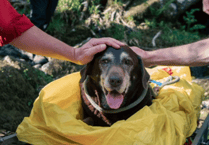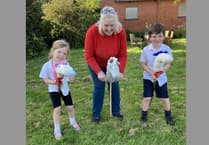DARTMOOR’S farmers may hold the key to preserving the moor, as new innovative methods are trialled on Dartmoor to manage livestock, support agriculture and help conservation efforts.
While many believe that farmers are only involved in food production, they also play a vital role in upholding Britain’s top animal welfare standards and acting as stewards for nature and the countryside.
Such roles have recently been on display up on Dartmoor, as a new collaborative approach to restore and protect the vital peatlands of the UK’s South West is trialled, combining the latest technology with traditional farming practices.
The peatlands of Dartmoor are of global importance, holding significant amounts of carbon-storing, water-filtering, wildlife-supporting peat in the form of bogs and mires. However, over centuries, these unique habitats have become threatened.
By working together with the Dartmoor Commoners’ Council, a range of government agencies, charities, businesses, universities, farmers and landowners have formed the South West Peatland Partnership (SWPP), aiming to restore over 2,500 hectares of peatlands before 2025.
This new partnership is stepping into its stride, as it works closely with farmers and commoners to understand traditional methods of managing the peatlands and how they want to see the landscape shaped over the coming years for the benefit of people, livestock, wildlife and the planet.
One current project has been to track peatland restoration on Dartmoor through sheep. 100 sheep were fitted with GPS tracking collars before being put out to graze on Dartmoor in early summer.
The collars allow the farmer and monitoring teams to track stock movements, identify how livestock are adapting to the peatland restoration and gather insights into how they interact with the changing landscape of the Moor.
Colin Abel, a Dartmoor farmer involved with the sheep tracking said: ‘By tracking the sheep before, during and after restoration we will be better able to understand how the work affects our livestock’s ability to move across the area, so we can ensure the peatland restoration doesn’t create barriers that prevent the grazing that is so important to the management of these areas.
‘We are also using phones to track how we move across the area when checking and gathering our sheep, so the restoration team can keep these routes useable by creating wider dams that quadbikes can cross.
‘This means we will still be able to look after our sheep without compromising the benefit of the restoration.’

-with-lightning).jpeg?width=209&height=140&crop=209:145,smart&quality=75)


